Detroit Auto Show provides glimpse of 2017
Filed under: Equinox, Autos
Detroit, MI — The North American International Auto Show, better known as the Detroit Auto Show, had its share of surprises, but it also displayed a sense of confusion in the automotive world as it made its annual mid-January run at Cobo Hall.
The surprises include a stunning new Avista coupe from Buick, a new generation Mercedes E-Class, and several large luxury cars, including the Cadillac CT6, the Volvo S90, and the Hyundai Genesis G90.
Another surprise is that the large luxury vehicles overshadowed smaller compact-uitility CUVs, which, over the last two years, have proliferated and sold so well, causing them to become the largest single segment (14 percent) of the U.S. market. And yet even the judges for the North American Car and Truck/Utility of the Year seemed oblivious to the newest and hottest trend in automotives.
The stretched-compact Honda Civic was voted car of the year, and the Volvo XC90, a breakthrough full-size SUV from the Swedish company now owned by Chinese interests, as truck/utility of the year.
Since gas has dropped down under $2 a gallon, alternative-energy cars and hybrids have taken a huge hit, while buyers once again have exercised that lustful American ideal of bigger is better. Nowhere was there a nod to the popularity of CUVs. Larger SUVs and larger luxury sedans were the primary stories at Detroit, although there was plenty of talk and displaying of autonomous (self-driving) cars, which are guaranteed to stir up conversation.
Also, while China has risen to become the largest auto market in the world, the suddenly struggling Chinese economy has caused that country’s demand to plateau. All of those things might be interwoven in what was laid out at Cobo Hall in Detroit. Read more
Renegade Carries Jeep to Wordly Crossover
Filed under: Equinox, Weekly test drives, Autos
By John Gilbert
Jeep, by itself, is the most-recognized name in automotives — all over the world. It is, of course, best-known in the U.S., but it also carved out a name and reputation in Europe and in Asia when it was created in 1941 to help the good guys win World War II.
Currently, the Jeep brand spans a wide range from rugged off-roading to luxury country clubbing, with the Wrangler climbing rocks and the Grand Cherokee carrying you and your guests to the fancy party. The latest addition to the Jeep line is the Renegade, and it adds a new dimension because it is so hopelessly cute that it is attractive, even though cute fairly shouts that it can’t be rugged. Then it proves it is more rugged than anyone could have guessed, as it hauls its cute little compact and boxy shape up rocky cliffs and over terrain that you’d never think of attempting in an ordinary lifespan.
As if to emphasize how popular Jeep is worldwide, the Renegade came into being with full encouragement from Fiat, which is handy, because Fiat owns Chrysler, which owns Jeep. How much Fiat backs the Renegade might best be explained by the fact that Fiat used an Italian plant to build the Renegade, with plans to sell it in Europe as well as in the U.S. and all around the world.
Fiat has returned to the U.S. with the cute subcompact 500, and it offers a hot-rod version of it with a high-tech “MultiAir” 4-cylinder engine bolstered by a turbocharger that turns it into a fun and dashing little pocket-rocket. At the same time, Chrysler, Dodge and Jeep have been using a modified version of a joint-venture 2.4-liter 4-cylinder originally designed by Hyundai when that South Korean company barged into the high-tech end of automotives five or six years ago.
When the Fiat MultiAir system was explained to me, it is a system that uses a series of oil-filled tubes connecting the intake and exhaust valvetrain. It would be a dual-overhead-camshaft system, except that there is only one cam; the other is replaced by the valves on one cam operating the valves on the other side directly, via the compressing of the oil tubes.
Instead of being complex, it is innovative enough to allow almost infinite overlap for expansive valve timing. Chrysler and Fiat engineers told me that the MultiAir system would work to improve any engine, so I continued to pester them to prove it by installing it on an engine other than the 1.4-liter Fiat. So they did.
All of which brings us back to the Renegade. You can choose from two engines in the lightest of Jeep off-roaders. First is the 1.4-liter MultiAir turbo engine — right out of the Fiat Abarth. It delivers 160 horsepower and 184 foot-pounds of torque, and comes with a 6-speed stick shift. The other engine is the 2.4-liter “Tigershark” 4-cylinder equipped with MultiAir2 technology on the valvetrain, and it is coordinated with a smooth-shifting 9-speed automatic, offering 160 horsepower and 184 foot-pounds of torque. Read more
All-new 2016 Tucson Lifts CUV Stature
Filed under: Equinox, Autos
By John Gilbert
It was just five years ago that Hyundai put South Korean automotives on the global map by redesigning the midsize Sonata from a dull sedan into a stunning, flashy and technology-filled showpiece. Almost immediately, the technology spread to all the other Hyundai cars, as well to everything from Kia, its newly adopted partner. Hyundai’s SUVs benefitted too, although they seemed almost as after-thoughts.
Since then, the SUV market has skyrocketed, so Hyundai improved the Santa Fe to new levels of function and luxury, with two versions, including a slightly shorter Sport, that keeps its distance larger than the compact crossover Tucson. For the 2016 model year, and for the first time since Hyundai technology peaked, the Tucson gets its moment in the sun, and the timing couldn’t be better for the new CUV (Crossover Utility Vehicle).
The compact crossover segment that numbered about five vehicles a decade ago now numbers over 40. Everybody has one, or two, and some are outstanding. All of them are in hot pursuit of the affordable segment stars — the Honda CR-V, Toyota RAV4, Ford Escape, Nissan Rogue, and, more recently, the Mazda CX-5.
As of right now, one out of every three vehicles sold is an SUV, and the compact CUVs are flat taking over. It makes sense, because if you want something that can haul a little more, offers more storage room, and has the anxiety-free stability of all-wheel drive, then the most compact SUVs also offer more maneuverability and fuel economy.
The Tucson used to be a more modest and less expensive alternative to the top sellers, but the new 2016 Tucson goes immediately to the head of the class. It is completely redesigned, and now resembles a compact version of the stylish Santa Fe. Its high-tech stuff either stands out immediately, or resides more subtly beneath the skin, where it makes the vehicle stiffer, handle better, is safer and more versatile.
The last Tucson redesign came in 2010, and it was a solid step upward, but nothing like this one. Before approaching the many details, consider that the new Tucson starts with front-wheel drive available as a $1,400 option in all versions. The SE starts at a base price of $22,700; the SE Pop starts at $23,450; the Eco at $24,150; the Sport at $26,150; the Limited at $29,900; and the Limited Ultimate at $32,650. It’s hard to find a capable compact car for $25,000 these days. Read more
Charger Hellcat Offers 707-HP Family Sedan
Filed under: Weekly test drives, Autos
By John Gilbert
Maybe you’ve heard about the techniques of professional drag-racing, where drivers line up at the amber starting lights, then time it as perfectly as they can to launch without “red-lighting” an instant before the green light shows.
If you can find a place to try that in the ol’ family truckster, it’s fun. And if you happen to be driving a 2015 Dodge Charger SRT Hellcat, it’s more than just fun. Sure, it costs a little more than the garden variety Charger — close to $65,000 — but it comes fitted with a 707-horsepower supercharged 6.2-liter Hemi, and various accompanying toys.
One of them is that on the instrument panel, along with showing you your speed and RPMs and fuel gauge, you can switch to several screens. One of them, under “performance,” gives you a cluster of numbers between the speedometer and tach. Set it for 0-60, or 0-100, or a quarter-mile, and then hit the button when you’re ready to go. It counts down, and when it gets to your starting time, you accelerate as hard as you dare. The readout not only gives you a timed clocking of how you did, but it also shows your starting-line reaction time, for how close you cut the launch to the quickest possible time.
I found a deserted stretch of rural highway, and set the device for 0-60. Then I hammered it. After a couple runs, I showed a best time of 4.4 seconds. Dodge says the car will do the quarter mile in less than 14 seconds, and I have no reason to question that. If you know of a deserted stretch of rural highway, you realize immediately that you could spend a few bucks refueling before you get over the adrenaline kick of spending an afternoon playing with that Charger Hellcat.
The best thing about it, along with the looks and the amazing performance, is that when you simply start the engine and crack the throttle, people stop and stare, while you’re just happy your windows didn’t shatter. Read more
MX-5 Miata Becomes Bargain Exotic for 2016
Filed under: Equinox, Weekly test drives, Autos
By John Gilbert
Hurry! If you live in the warmer part of the country, there’s no urgency; but farther north, where the ominous approach of cold weather and a little snow and ice is nearing, sports car driving can become a seasonal venture, and the leaf-changing time of autumn might be the best time possible.
If you own a Porsche Cayman, or a Jaguar F-Type, an Audi TT, BMW Z4 or an Alfa 4C, there’s no real urgency, because you undoubtedly can afford to pick your spots. But if you want the same thrill, possibly amplified by the knowledge that you beat the system by spending about one-fourth of the required investment of the above-named roadsters, then run — don’t walk — to your closest Mazda dealer and pick off a 2016 MX-5 Miata for half the sticker price or less.
The base Miata Sport starts at $24,915, and moving up to the Club is $28,600, with the top Grand Touring starting at $30,065. The Club is what I drove, and it adds a limited slip and Bilstein shock absorbers and an inch larger wheels if you pick the Sport package.
Jump into the Miata, flip the closure lever and lower the top with one hand — no power gizmos, please. Start up the Skyactiv engine, shift into gear and take off. The feeling of exhilaration is instant and always the same. Fantastic. If it feels even more compact than you anticipated, it is. Its 154.4-inch length is more than an inch shorter than the original was in 1990, although wheelbase as 1.7 inches stretched on the new car, and width is a couple inches more.
With Mazda, the power and torque numbers mean very little. If it feels fast enough to give you a thrill, it is. The new Skyactiv 2.0 has 155 horses and 148 foot-pounds, and the outgoing 2.0, without Skyactiv technology, actually had more horsepower at 167 at 7,000 revs, with less torque at 140. I never know how Mazda does it, but the new car feels quicker in a more coordinated way where the engine, gearbox, electric power steering and suspension all contribute.
For 2016, even the crustiest traditionalist among Miata fans will have to admit that as good as the first three generations of the Miata have been, the fourth-generation version gives you the largest jump forward in technology, and also provides some visual exhilaration, from the first time you lay eyes on it. Read more


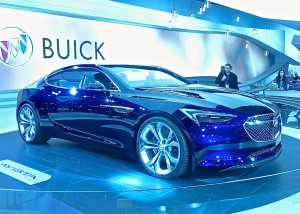
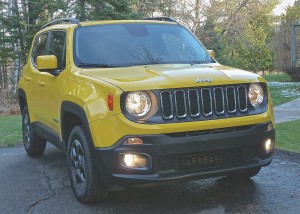
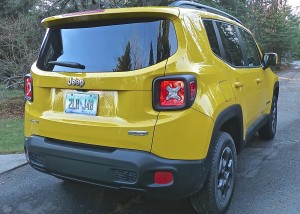
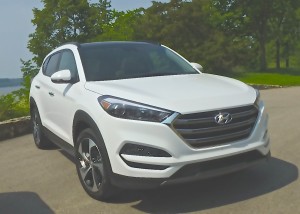
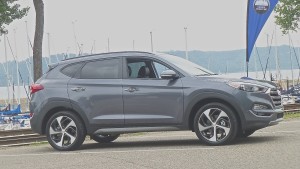
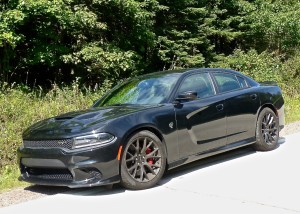
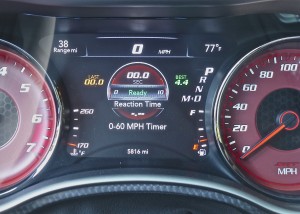
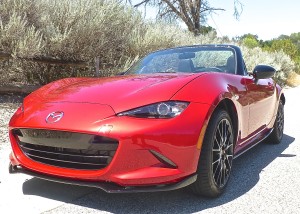
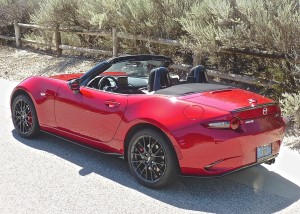
 John Gilbert is a lifetime Minnesotan and career journalist, specializing in cars and sports during and since spending 30 years at the Minneapolis Tribune, now the Star Tribune. More recently, he has continued translating the high-tech world of autos and sharing his passionate insights as a freelance writer/photographer/broadcaster. A member of the prestigious North American Car and Truck of the Year jury since 1993. John can be heard Monday-Friday from 9-11am on 610 KDAL(www.kdal610.com) on the "John Gilbert Show," and writes a column in the Duluth Reader.
John Gilbert is a lifetime Minnesotan and career journalist, specializing in cars and sports during and since spending 30 years at the Minneapolis Tribune, now the Star Tribune. More recently, he has continued translating the high-tech world of autos and sharing his passionate insights as a freelance writer/photographer/broadcaster. A member of the prestigious North American Car and Truck of the Year jury since 1993. John can be heard Monday-Friday from 9-11am on 610 KDAL(www.kdal610.com) on the "John Gilbert Show," and writes a column in the Duluth Reader.